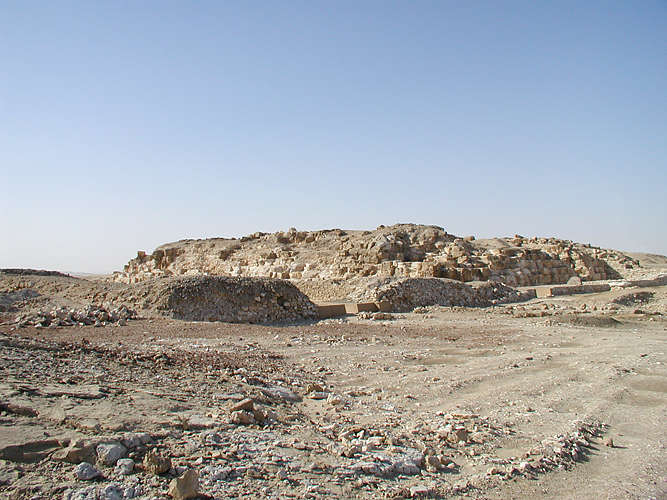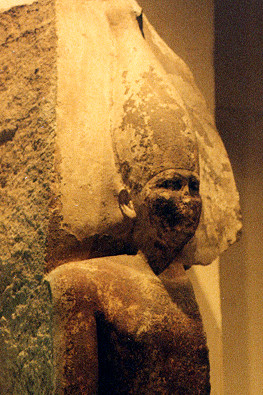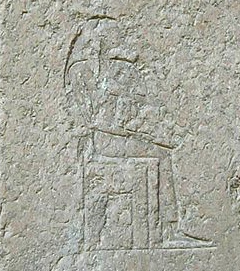|
Radjedef
Djedefre (also known as Djedefra and Radjedef; died 2558 BC) was an ancient Egyptian king (pharaoh) of the 4th Dynasty during the Old Kingdom. He is well known by the Hellenized form of his name Rhatoisēs (Ῥατοίσης) by Manetho. Djedefre was the son and immediate throne successor of Khufu, the builder of the Great Pyramid of Giza; his mother is not known for certain. He is the king who introduced the royal title ''Sa-Rê'' (meaning “Son of Ra”) and the first to connect his cartouche name with the sun god Ra. Family Djedefre married his brother Kawab's widow, Hetepheres II. She was a sister to both of them, and who perhaps married a third brother of theirs, Khafre, after Djedefre's death.Dodson & Hilton, p.55 Another queen, Khentetenka is known from statue fragments in the Abu Rowash mortuary temple. Children with Hetepheres II or Khentetka * Hornit (“Eldest King's Son of His Body”) known from a statue depicting him and his wife.Dodson & Hilton, p.58 * S ... [...More Info...] [...Related Items...] OR: [Wikipedia] [Google] [Baidu] |
Djedefra Wearing The Crown Of Lower Egypt-E 11167-IMG 9702-gradient
Djedefre (also known as Djedefra and Radjedef; died 2558 BC) was an ancient Egyptian king (pharaoh) of the Fourth Dynasty of Egypt, 4th Dynasty during the Old Kingdom of Egypt, Old Kingdom. He is well known by the Hellenization, Hellenized form of his name Rhatoisēs (Ῥατοίσης) by Manetho. Djedefre was the son and immediate throne successor of Khufu, the builder of the Great Pyramid of Giza; his mother is not known for certain. He is the king who introduced the royal title ''Sa-Rê'' (meaning “Son of Ra”) and the first to connect his cartouche name with the sun god Ra. Family Djedefre married his brother Kawab's widow, Hetepheres II. She was a sister to both of them, and who perhaps married a third brother of theirs, Khafre, after Djedefre's death.Dodson & Hilton, p.55 Another queen, Khentetka, Khentetenka is known from statue fragments in the Abu Rowash mortuary temple. Children with Hetepheres II or Khentetka * Hornit (“Eldest King's Son of His Body”) kn ... [...More Info...] [...Related Items...] OR: [Wikipedia] [Google] [Baidu] |
Abu Rawash
Abu Rawash (also spelled ''Abu Roach'', Abu Roash; , , , "flesh of sensual pleasures"), north of Giza, is the site of Egypt's most northerly pyramid, also known as the lost pyramid – the mostly ruined Pyramid of Djedefre, the son and successor of Khufu. Originally, it was thought that this pyramid had never been completed, but the current archaeological consensus is that not only was it completed, but that it was built about the same size as the Pyramid of Menkaure – the third largest of the Giza pyramids. It's believed that the destruction of the pyramid started at the end of the New Kingdom of Egypt, New Kingdom at the latest, and was particularly intense during the Roman and early Christian eras when Wadi El Natrun#Invasion of Scetis, a Coptic monastery was built in nearby Wadi El Natrun, Wadi Karin. It has been proven, moreover, that at the end of the nineteenth century, stone was still being hauled away at the rate of three hundred camel loads a day. I ... [...More Info...] [...Related Items...] OR: [Wikipedia] [Google] [Baidu] |
Fourth Dynasty Of Egypt
The Fourth Dynasty of ancient Egypt (notated Dynasty IV) is characterized as a "golden age" of the Old Kingdom of Egypt. Dynasty IV lasted from to c. 2498 BC. It was a time of peace and prosperity as well as one during which trade with other countries is officially documented. The Fourth Dynasty heralded the height of the pyramid-building age. The peaceful rule of the Third Dynasty of Egypt, Third Dynasty allowed artistic expressions to flourish. Building experiments done by King Sneferu led to the evolution of mastaba tombs into the smooth sided pyramids like those seen on the Giza Plateau. No other period in Egyptian history equaled the accomplishments achieved during the Fourth Dynasty.Egypt: Land and Lives of the Pharaohs Revealed, (2005), pp. 80–90, Global Book Publishing: Australia Rulers Summary of Listed Kings Sneferu Sneferu, lauded as "Bringer of Beauty", "Master of All Justice", and "Ruler of Lower and Upper Nile", was the first pharaoh of the fourt ... [...More Info...] [...Related Items...] OR: [Wikipedia] [Google] [Baidu] |
Khufu
Khufu or Cheops (died 2566 BC) was an ancient Egyptian monarch who was the second pharaoh of the Fourth Dynasty of Egypt, Fourth Dynasty, in the first half of the Old Kingdom of Egypt, Old Kingdom period (26th century BC). Khufu succeeded his father Sneferu as king. He is generally accepted as having commissioned the Great Pyramid of Giza, one of the Seven Wonders of the Ancient World, but many other aspects of his reign are poorly documented.Thomas Schneider: ''Lexikon der Pharaonen''. Albatros, Düsseldorf 2002, , page 100–104. The only completely preserved portrait of the king is a Khufu Statuette, small ivory figurine found in a temple ruin of a later period at Abydos, Egypt, Abydos in 1903. All other reliefs and statues were found in fragments, and many buildings of Khufu are lost. Everything known about Khufu comes from inscriptions in his necropolis at Giza pyramid complex, Giza and later documents. For example, Khufu is the main character noted in the Westcar Papyrus ... [...More Info...] [...Related Items...] OR: [Wikipedia] [Google] [Baidu] |
Sahure
Sahure (also Sahura, meaning "He who is close to Ra, Re"; died 2477 BC) was a pharaoh, king of ancient Egypt and the second ruler of the Fifth dynasty of Egypt, Fifth Dynasty ( – BC). He reigned for around 13 years in the early 25th century BC during the Old Kingdom of Egypt, Old Kingdom Period. Sahure's reign marks the political and cultural high point of the Fifth Dynasty of Egypt, Fifth Dynasty. He was probably the son of his predecessor Userkaf with Queen Neferhetepes (wife of Userkaf), NeferhetepesII, and was in turn succeeded by his son Neferirkare Kakai. During Sahure's rule, Egypt had important trade relations with the Levantine coast. Sahure launched several naval expeditions to modern-day Lebanon to procure cedar trees, slaves, and exotic items. His reign may have witnessed the flourishing of the Egyptian navy, which included a high-seas fleet as well as specialized racing boats. Relying on this, Sahure ordered the earliest attested expedition to the land ... [...More Info...] [...Related Items...] OR: [Wikipedia] [Google] [Baidu] |
Userkaf
Userkaf (known in Ancient Greek as , ; died 2491 BC) was a pharaoh, king of ancient Egypt and the founder of the Fifth Dynasty of Egypt, Fifth Dynasty. He reigned for around seven years in the early 25th century BC, during the Old Kingdom of Egypt, Old Kingdom period. He probably belonged to a branch of the Fourth Dynasty of Egypt, Fourth Dynasty royal family, although his parentage is uncertain; he could have been the son of Khentkaus I. He had at least one daughter. Sahure, who succeeded him as king, was probably his son with his consort Neferhetepes (wife of Userkaf), Neferhetepes. A tomb belonging to another possible son, Waser-If-Re, has been discovered in Saqqara. His reign heralded the ascendancy of the cult of Ra, who effectively became Egypt's state god during the Fifth Dynasty. Userkaf may have been a high-priest of Ra before ascending the throne, and built a Egyptian sun temple, sun temple, known as the ''Sun temple of Userkaf, Nekhenre'', between Abusir and Abu Gurab. ... [...More Info...] [...Related Items...] OR: [Wikipedia] [Google] [Baidu] |
Hellenization
Hellenization or Hellenification is the adoption of Greek culture, religion, language, and identity by non-Greeks. In the ancient period, colonisation often led to the Hellenisation of indigenous people in the Hellenistic period, many of the territories which were conquered by Alexander the Great were Hellenized. Etymology The first known use of a verb that means "to Hellenize" was in Greek (ἑλληνίζειν) and by Thucydides (5th century BC), who wrote that the Amphilochian Argives were Hellenised as to their language by the Ambraciots, which shows that the word perhaps already referred to more than language.. The similar word Hellenism, which is often used as a synonym, is used in 2 Maccabees (c. 124 BC) and the Book of Acts (c. AD 80–90) to refer to clearly much more than language, though it is disputed what that may have entailed. Background Historical By the 4th century BC, the process of Hellenization had started in southwestern Anatolia's Lycia, Cari ... [...More Info...] [...Related Items...] OR: [Wikipedia] [Google] [Baidu] |
Feet Of A Statue Of Didufri-E 12627-IMG 9696-gradient
The foot (: feet) is an anatomical structure found in many vertebrates. It is the terminal portion of a limb which bears weight and allows locomotion. In many animals with feet, the foot is an organ at the terminal part of the leg made up of one or more segments or bones, generally including claws and/or nails. Etymology The word "foot", in the sense of meaning the "terminal part of the leg of a vertebrate animal" comes from Old English ''fot'', from Proto-Germanic *''fot'' (source also of Old Frisian ''fot'', Old Saxon ''fot'', Old Norse ''fotr'', Danish ''fod'', Swedish ''fot'', Dutch ''voet'', Old High German ''fuoz'', German ''Fuß'', Gothic ''fotus'', all meaning "foot"), from PIE root *''ped-'' "foot". The plural form ''feet'' is an instance of i-mutation. Structure The human foot is a strong and complex mechanical structure containing 26 bones, 33 joints A joint or articulation (or articular surface) is the connection made between bones, ossicles, or other hard s ... [...More Info...] [...Related Items...] OR: [Wikipedia] [Google] [Baidu] |
Abydos KL 04-03 N22
Abydos may refer to: *Abydos, a progressive metal side project of German singer Andy Kuntz *Abydos (Hellespont), an ancient city in Mysia, Asia Minor * Abydos (''Stargate''), name of a fictional planet in the ''Stargate'' science fiction universe *Abydos, Egypt Abydos ( or ; Sahidic ') is one of the oldest cities of ancient Egypt, and also of the Ta-wer, eighth Nome (Egypt), nome in Upper Egypt. It is located about west of the Nile at latitude 26° 10' N, near the modern Egyptian towns of El Araba ..., a city in ancient Egypt * Abydos Station, a pastoral lease and cattle station in Western Australia See also * Abidu, a village in Iran * Abidos, Pyrénées-Atlantiques, in southwestern France {{disambiguation, geo ... [...More Info...] [...Related Items...] OR: [Wikipedia] [Google] [Baidu] |
Block Inscribed With The Cartouche Of King Djedefre - Nubian Museum
Block or blocked may refer to: Arts, entertainment and media Broadcasting * Block programming, the result of a programming strategy in broadcasting * W242BX, a radio station licensed to Greenville, South Carolina, United States known as ''96.3 the Block '' * WFNZ-FM, a radio station licensed to Harrisburg, North Carolina, United States, branded as ''92.7 The Block'' * "Blocked", an episode of the television series ''The Flash'' Music * Block Entertainment, a record label * Blocks Recording Club, a record label * Woodblock (instrument), a small piece of slit drum made from one piece of wood and used as a percussion instrument * "Blocks", by C418 from ''Minecraft – Volume Beta'', 2013 Toys * Toy block, one of a set of wooden or plastic pieces, of various shapes * Unit block, a type of standardized wooden toy block for children Video games * Blocked (video game), a puzzle game for the iPhone and iPod Touch Building and construction * Concrete block, cinder block or cement ... [...More Info...] [...Related Items...] OR: [Wikipedia] [Google] [Baidu] |
Prince Setka As Scribe-E 12629-E 12631-IMG 9671-gradient
A prince is a male ruler (ranked below a king, grand prince, and grand duke) or a male member of a monarch's or former monarch's family. ''Prince'' is also a title of nobility (often highest), often hereditary, in some European states. The female equivalent is a princess. The English word derives, via the French word ''prince'', from the Latin noun , from (first) and (head), meaning "the first, foremost, the chief, most distinguished, noble ruler, prince". In a related sense, now not commonly used, all more or less sovereign rulers over a state, including kings, were "princes" in the language of international politics. They normally had another title, for example king or duke. Many of these were Princes of the Holy Roman Empire. Historical background The Latin word (older Latin *prīsmo-kaps, ), became the usual title of the informal leader of the Roman senate some centuries before the transition to empire, the ''princeps senatus''. Emperor Augustus established the forma ... [...More Info...] [...Related Items...] OR: [Wikipedia] [Google] [Baidu] |
Bikheris
Bikheris () is the Hellenized name of an ancient Egyptian king, who may have ruled during the 4th Dynasty ( Old Kingdom period). Next to nothing is known about this ruler and some Egyptologists even believe him to be fictitious.Jürgen von Beckerath: ''Chronologie des pharaonischen Ägypten. Die Zeitbestimmung der ägyptischen Geschichte von der Vorzeit bis 332 v. Chr.'' (= ''Münchner ägyptologische Studien'', vol. 46). von Zabern, Mainz 1997, , p. 158. Identity Possible name sources In attempts to reconstruct Ancient Egyptian king lists, Egyptologists and historians face several problems. As already mentioned, ''Bikheris'' is a Hellenized name variation. The name appears in the book '' Aegyptiaca'' written by Manetho around 300 BC. In a Latin copy of Manetho, written by Eratosthenes, a king named ''Biuris'' is placed at the date when Bikheris allegedly ruled. Scholars wonder if both names actually derive from one and the same Egyptian source.Alan B. Lloyd: ''Commenta ... [...More Info...] [...Related Items...] OR: [Wikipedia] [Google] [Baidu] |








